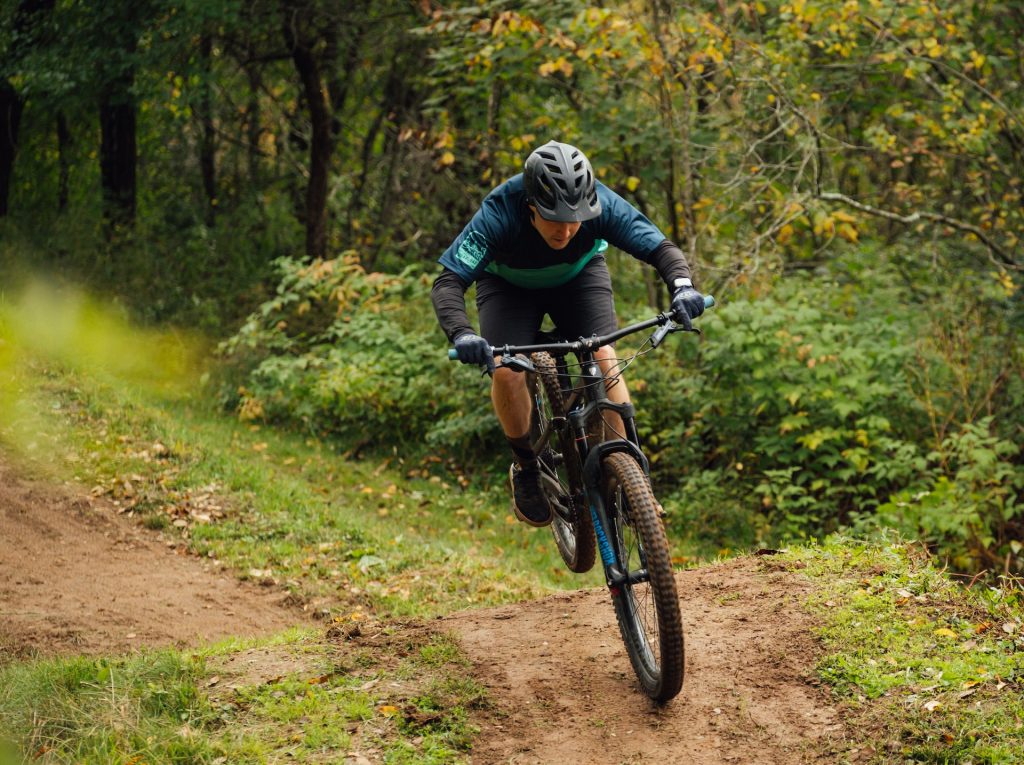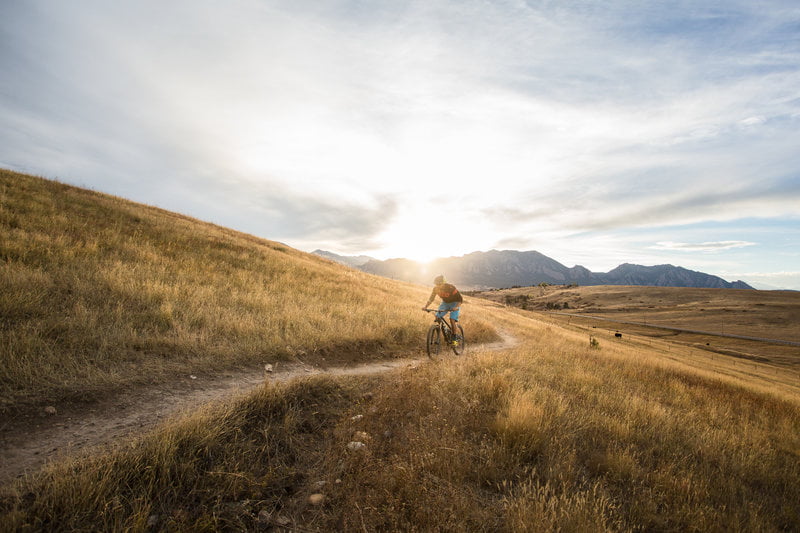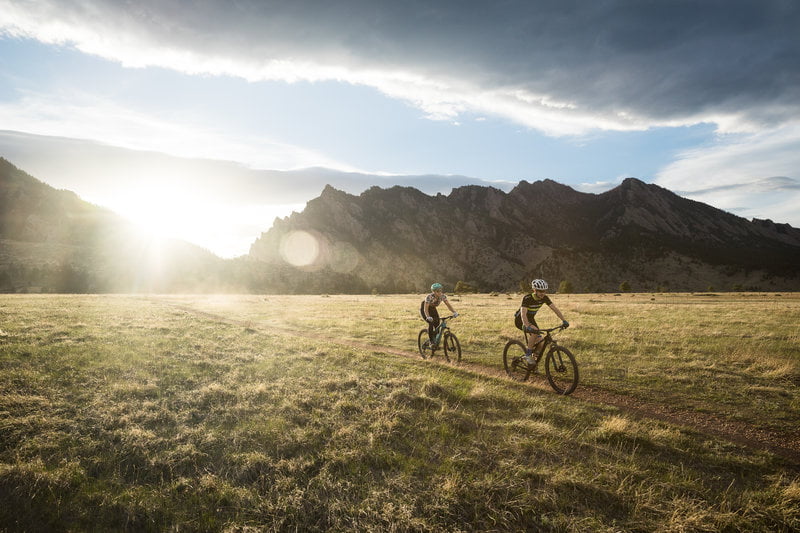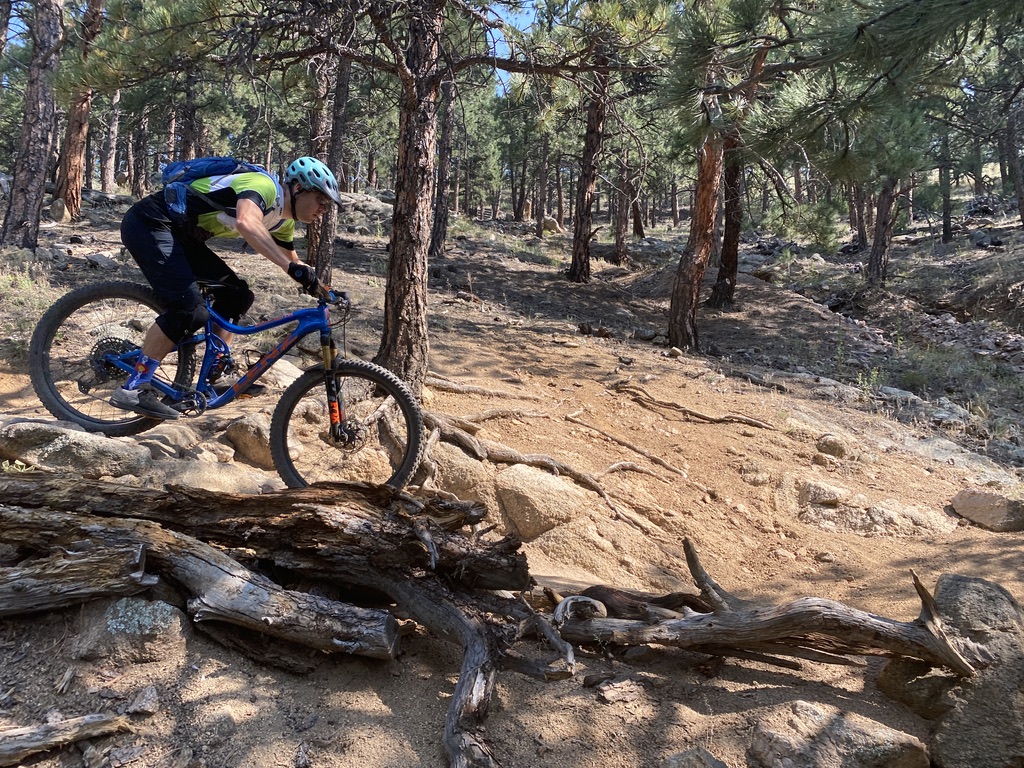When considering crank length for a mountain bike, it is important to keep in mind the type of riding that the bike will encounter as well as the rider’s morphology. The considerations for technical riding are different than for riding on smoother surfaces, and the length of the rider’s legs are also critical to crank length.

“Longer” and “shorter” cranks in this article refer to longer and shorter relative to the particular rider, not necessarily to extremes on the spectrum of crank length. Here, a “longer” crank is one that is greater than 21% of the rider’s measured inner leg length (from pubic bone to floor in bare feet; this length is usually around two inches longer than the person’s pants inseam). A “shorter” crank is one that is less than 20% of the rider’s measured inner leg length. A “standard” length crank for a rider would be in the 20-21% range of their inner leg length.
“Longer” Cranks
If the bike will be used for long climbs on fire roads, a longer crank will be of benefit, offering faster climbing speed. Again, this is longer relative to the rider, since their legs must be long enough to efficiently turn the crank. Real-life testing I have done with many riders over the years indicates greater speed and power output on steady-state road climbs with a crank around 21.5% than one around 20% of inner leg length. This is due to the greater leverage of the longer crank (it takes less force to pull a nail out with a long crowbar than with a claw hammer). In rotational movement, greater leverage equals greater torque if the input force is constant, since torque = force X radius (i.e. crank length).

Longer, lower-intensity efforts favor longer cranks. Since pedaling at lower cadences generally results in lower heart and respiration rates, if you can maintain the same speed while doing so because of the longer crank’s greater leverage, this will result in increased endurance.
Also, due to the longer stance, longer cranks offer increased fore-aft stability when standing out of the saddle over rough terrain and drop-offs. Consider an athlete in an impact sport—to avoid getting knocked down when crashed into by another player, they will spread their legs further apart. Same idea when standing on the pedals, especially when banging hard into repeated big bumps at speed.

If a crank longer than 175mm is used on a mountain bike, the bike will require an extra-high bottom bracket to avoid rock strikes if used on rocky pedaling sections. Most mountain bikes are designed for that length, so you can usually assume that, with proper shock inflation, pedal clearance should suffice.
Brief, high-intensity efforts favor shorter cranks. Shorter cranks offer greater ease in increasing cadence when needed over varying terrain. Coming back up out of a gully after coasting into it over a dropoff is facilitated by downshifting and spinning at a high cadence with a shorter crank.
For fast, technical riding, shorter cranks offer increased mobility when dynamically pushing the bar away into dips and pulling it back toward the hips over rises (“rip-rowing” in https://www.leelikesbikes.com terminology); the hip hinge is improved because the hips can square up with the bar more than if the feet are spread further apart front to back. This would be a tremendous advantage on pump tracks and in BMX.

Since most mountain bikes are generally designed to handle 175mm cranks, cranks shorter than that will offer greater ground clearance and fewer strikes on rocks, stumps, and roots. Conversely, since the seat height for efficient pedaling is determined from the top of the saddle to the bottom pedal, expect a higher saddle relative to the ground and hence higher center of gravity as well as greater drop from saddle to bar whenever the crank length is shortened.
Final Thoughts
Any rider’s body will automatically increase the pedaling cadence with a shorter crank and decrease it with a longer crank. The body tends to favor a certain foot speed, so if the pedal circle is bigger, the time to get around it is longer, and vice versa. Since power equals torque times cadence, you can theoretically produce the same amount of power with the same force either by turning a shorter crank (lower torque) at high cadence or by turning a longer crank at lower cadence.
Where to find the right crank length
Most manufacturers don’t make cranks outside of the 165mm to 175mm range. Click here to buy cranks longer than 180mm and click here to shop for cranks shorter than 170mm.


